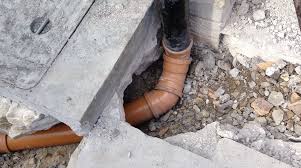The most important part of this system is proper ventilation. Therefore, every pipe and fixture should be connected to the ventilation piping. These pipes prevent vacuums from forming in the drain system thereby allowing water or waste to flow through the pipes smoothly without any obstructions. Similarly, it is important to understand the basics before getting in to the field yourself. Below are a few guidelines:
Familiarize with the plumbing techniques
There are various restrictions and grades of materials and sizes for pipes depending on the localities, so you will have to keep them in mind when you start learning the ropes for this field of work. For example; the distances and placement of certain fixtures and pipes from one another may be different from one place to another for non destructive digging in Melbourne. Familiarizing with the local codes before you start your project will make it easy for you to get started. There are always local plumbers that you can seek advice from too.
Choosing a pipeline
After gathering as much knowledge, consider the pipe material that would fit best with your budget and with any requirements of the existing piping. Most ventilation piping systems use pipes that are small in diameter which allows for plastic pipes such as PVC. If high durability or strength is needed, stronger materials such as steel, cast iron or copper can be used.
Consider sizing
The sizing of the pipes that are used for ventilation and drainage dictates the amount of fixtures that can be used. Large pipes will give more distance between fixtures but usually using only large pipes might be unnecessary. Examine the local codes and regulations for vents and drainage pipe sizes. If the proper sizes are not met, problems will arise later on such as drain cleaning.
Specific understanding of the pipes in the building
Examining the drainage system in the building you are working on and learning about the blocked drains in Melbourne will give you more knowledge on how the system is designed and what exactly you will need to do. All these pipes that are often connected to sinks, showers etc are carried out from drain pipes to collect in a central control center that is the waste water system. The general layout of the piping such as vents should be straight to prevent any deposits or condensation from building inside. Horizontal pipes should always be fixed in a slant position so that gravity will push through all the water and waste without stagnating it. These slopes usually run at a slope of ¼ inch down.
